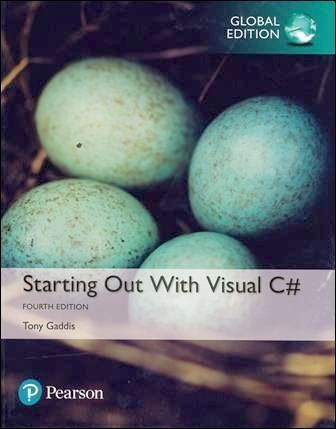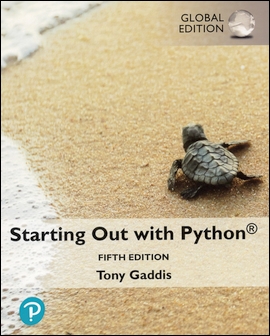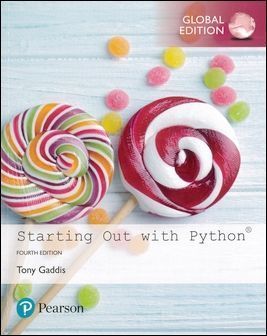Starting out with Visual C# 4/e
售價
$
1,500
- 一般書籍
- ISBN:9781292163215
- 作者:Tony Gaddis
- 版次:4
- 年份:2017
- 出版商:Pearson Education
- 頁數/規格:792頁/平裝雙色
書籍介紹
本書特色
目錄
作者介紹
Description
Clear, friendly, and approachable, this Fourth Edition of Starting Out With Visual C# is an ideal beginning text for students with no programming experience. Detailed walk-throughs and a readable, comprehensible style make the text inviting to new programmers, while numerous practical example programs highlight the most important programming topics. Gaddis’s detailed, step-by-step instructions teach a GUI-based approach that motivates students with familiar graphical elements. Topics are examined progressively in each chapter, with objects taught before classes. The Fourth Edition has been completely updated for Visual Studio 2015 and contains new sections on debugging, accessing controls on different forms, and auto-properties.
Clear, friendly, and approachable, this Fourth Edition of Starting Out With Visual C# is an ideal beginning text for students with no programming experience. Detailed walk-throughs and a readable, comprehensible style make the text inviting to new programmers, while numerous practical example programs highlight the most important programming topics. Gaddis’s detailed, step-by-step instructions teach a GUI-based approach that motivates students with familiar graphical elements. Topics are examined progressively in each chapter, with objects taught before classes. The Fourth Edition has been completely updated for Visual Studio 2015 and contains new sections on debugging, accessing controls on different forms, and auto-properties.
Features
Changes to this edition keep the text up-to-date
Pedagogical features help students master the material
Changes to this edition keep the text up-to-date
- UPDATED! The new edition has been completely updated, revised, and tested for Visual Studio 2015.
- NEW!Coverage of debugging includes a new section on using the Visual Studio debugger to locate logic errors. The section includes a hands-on tutorial that demonstrates how to set a breakpoint and single-step through an application’s code. A new section has also been added to Chapter 6, demonstrating how to use the debugger to step into, step over, and step out of methods.
- NEW! New sections in Chapter 9:
- Demonstrate how code on one form can access a control that exists on a different form.
- Explore auto-properties—properties that simply set and get a value, and can be declared without explicitly declaring backing fields, and without writing the code that sets and gets the property’s value.
- Discuss read-only auto-properties, which can be used to read the properties’ value, but not set the value.
Pedagogical features help students master the material
- Hands-on tutorials in each chapter guide students through the development of an application. Each tutorial provides detailed, step-by-step instructions, as well as the application’s completed code and screen captures of the completed forms.
- Checkpoints are questions provided in each chapter for self-testing.
- Notes appear throughout the text, providing short explanations of relevant, interesting, and misunderstood points.
- Tips advise students on the best techniques for approaching different programming or animation problems.
- Warnings caution students about techniques, practices, and features that can lead to malfunctioning programs or lost data.
- Example programs in each chapter provide an abundant number of code examples designed to highlight topics.
- Programming Problems in each chapter are designed to solidify students’ knowledge of the topics being studied.
- Review Questions and Exercises in each chapter present a thorough and diverse set of questions for review.
- VideoNotes provide a series of online videos developed specifically for the text and available online.
Table of Contents
1. Introduction to Computers and Programming
2. Introduction to Visual C#
3. Processing Data
4. Making Decisions
5. Loops, Files, and Random Numbers
6. Modularizing Your Code with Methods
7. Arrays and Lists
8. More about Processing Data
9. Classes and Multiform Projects
10. Inheritance and Polymorphism
11. Databases
Appendix A C# Primitive Data Types
Appendix B Additional User Interface Controls
Appendix C ASCII/Unicode Characters
Appendix D Answers to Checkpoint Questions
1. Introduction to Computers and Programming
2. Introduction to Visual C#
3. Processing Data
4. Making Decisions
5. Loops, Files, and Random Numbers
6. Modularizing Your Code with Methods
7. Arrays and Lists
8. More about Processing Data
9. Classes and Multiform Projects
10. Inheritance and Polymorphism
11. Databases
Appendix A C# Primitive Data Types
Appendix B Additional User Interface Controls
Appendix C ASCII/Unicode Characters
Appendix D Answers to Checkpoint Questions
Tony Gaddis, Haywood Community College



